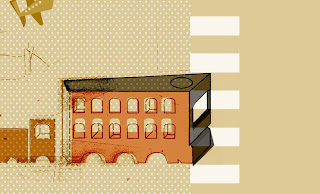
After being informed of the new 'eye magazine' I began to read up on an issue that has been discussed by David Crow, which interested me and brought me to think of my own work, in relation to the way I work, with a 'hands on' approach instead of relying completely on the computer, but letting the handmade practice and efficency of this practice inform my work.
Crow discusses how the hand crafted design is a symbolic tool of the person, it depicts who they are.
"The hand is an important metaphorical signal for the presence of the individual in craft, and is central in the symbolism surrounding the historic tension between man and machine , and more recently between global and local culture."
Arts and Crafts:
"If William Morris was the figurehead of the movement, the John Ruskin was it's inspiration: 'For it is not the material, but the absense of human endeavour, which makes the thing worthless' (Seven Lamps of Architecture, 1849).
One lasting principle of the movement is the claim that art has a place outside the gallery; that art can be found in things that are useful. Industry was a 'beast without hands' that made dull and monotonous objects (and as Karl Marx later suggested, would do untold damage to the human experience). Hands were celebrated as capable of probing the world, bringing a unity of working and learning. No machine could replace the sensitivity of hands. Craft practice became synonymous with individualism and integrity."
"Craft is so often described as a practice surrounding a specific set of materials. But in truth it is less the material that defines the practice as the process of play, experiment, adjustment, individual judgement and the love of a material - any material."
Crow explores the ideals of craft, depicting it's importance to design, and not just a singular craft but in all areas ranging from textiles to graphic design. He talks about the aid of the computer beside craft and what design was like without the fundamental values of 'traditional crafts'.













